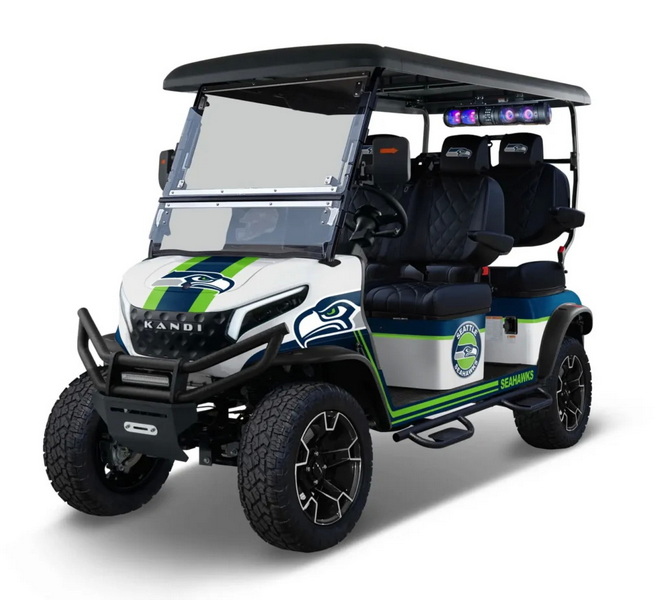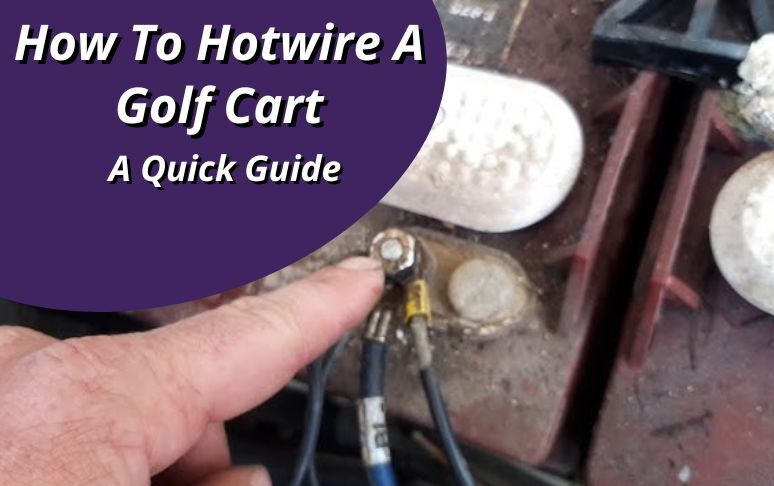Content Menu
● Understanding Electric Golf Cart Ignition Systems
● Locating the Ignition Wires
● Steps to Hotwire an Electric Golf Cart
● Alternative Methods
● Risks and Precautions
● Professional Assistance
● Preventing Future Key Loss
● Legal and Ethical Considerations
● Conclusion
● Frequently Asked Questions
>> 1. Is it legal to hotwire my own golf cart?
>> 2. Can hotwiring damage my golf cart's electrical system?
>> 3. Are there keyless options available for golf carts?
>> 4. How can I prevent losing my golf cart key in the future?
>> 5. What should I do if hotwiring doesn't work?
Hotwiring an electric golf cart is a process that should only be undertaken in emergency situations or with the owner's permission. This article will explore the steps involved in hotwiring an electric golf cart, the potential risks, and alternative methods to start your cart without a key. Please note that tampering with a golf cart's electrical system can be dangerous and may void warranties or cause damage if not done correctly.

Understanding Electric Golf Cart Ignition Systems
Before attempting to hotwire an electric golf cart, it's essential to understand how the ignition system works. Most electric golf carts use a simple key switch to activate the electrical system and allow the cart to operate. The key switch typically connects to the battery, solenoid, and other electrical components through a series of wires.
Locating the Ignition Wires
The first step in hotwiring an electric golf cart is to locate the ignition wires. These are usually found under the dashboard or near the steering column[1][2]. In most cases, you'll find a red wire (power) and a blue wire (solenoid activation) connected to the key switch.
Steps to Hotwire an Electric Golf Cart
1. Safety First: Ensure the golf cart is in a safe location and the parking brake is engaged.
2. Access the Wires: Remove any panels or covers to expose the wiring behind the key switch.
3. Identify the Wires: Locate the red (power) and blue (solenoid) wires connected to the key switch[1].
4. Prepare the Wires: Carefully strip a small section of insulation from each wire, exposing the copper inside.
5. Connect the Wires: Touch the exposed ends of the red and blue wires together to bypass the key switch[1][5].
6. Secure the Connection: Once the cart powers on, use electrical tape to secure the connection temporarily.
7. Test the Cart: Gently press the accelerator to ensure the cart responds and moves.
Here's a video demonstration of the process:
Alternative Methods
If you're uncomfortable with directly manipulating wires, there are alternative methods to start your golf cart without a key:
1. Screwdriver Method: Some golf carts allow you to turn the ignition switch using a flathead screwdriver[2].
2. Spare Key: Always keep a spare key in a safe place to avoid the need for hotwiring.
3. Key Switch Replacement: If you've lost your key, replacing the entire key switch can be a more permanent solution.
Risks and Precautions
Hotwiring an electric golf cart comes with several risks:
- Electrical Shock: Working with live electrical systems can be dangerous.
- Damage to Components: Improper connections can damage the cart's electrical system.
- Legal Issues: Hotwiring someone else's property is illegal and can result in serious consequences.
- Warranty Voiding: Tampering with the electrical system may void your cart's warranty.
Always prioritize safety and consider seeking professional help if you're unsure about the process.
Professional Assistance
If you're not comfortable hotwiring your golf cart or if the above methods don't work, it's best to contact a professional. Golf cart technicians have the tools and expertise to safely start your cart without causing damage.
Preventing Future Key Loss
To avoid the need for hotwiring in the future, consider these preventive measures:
1. Keep spare keys in secure locations.
2. Use a key fob or lanyard to keep your keys easily accessible.
3. Install a keyless entry system on your golf cart.
4. Regularly maintain your golf cart to prevent ignition system issues.
Legal and Ethical Considerations
It's crucial to emphasize that hotwiring should only be done on a golf cart that you own or have explicit permission to operate. Attempting to hotwire someone else's property is illegal and unethical.
Conclusion
Hotwiring an electric golf cart is a skill that can be useful in emergency situations, but it should be approached with caution. Always prioritize safety, consider alternative methods, and seek professional help when necessary. Remember that prevention is the best approach – keeping spare keys and maintaining your golf cart properly can save you from the need to hotwire in the first place.

Frequently Asked Questions
1. Is it legal to hotwire my own golf cart?
While it's generally legal to modify your own property, hotwiring may void warranties and could be considered tampering. Always check local laws and your cart's warranty terms before attempting to hotwire.
2. Can hotwiring damage my golf cart's electrical system?
Yes, improper hotwiring can potentially damage your cart's electrical components. If you're unsure about the process, it's best to consult a professional to avoid costly repairs.
3. Are there keyless options available for golf carts?
Many modern golf carts come with keyless entry systems or can be retrofitted with them. These systems eliminate the need for traditional keys and can be a convenient alternative.
4. How can I prevent losing my golf cart key in the future?
To prevent key loss, consider using a key fob, keeping spare keys in secure locations, or installing a keyless entry system. Regular key maintenance and organization can also help.
5. What should I do if hotwiring doesn't work?
If hotwiring doesn't start your golf cart, there may be other electrical issues at play. In this case, it's best to have your cart inspected by a qualified technician to diagnose and resolve the problem.









































